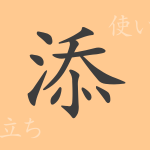Kanji, the characters used in Japanese writing, embody deep meanings and histories, enriching the culture. One such kanji, ‘転(テン)’, plays a vital role across various aspects of everyday life. This article explores the charm of ‘転’, from its origins to its meanings and usages, including its presence in idioms and proverbs.
Origins of ‘転(テン)’
The kanji ‘転’ originated in ancient China. Its form symbolizes the action of a wheel turning, representing movement and change. Initially depicting the motion of wheels rolling on the ground, it evolved to encompass various concepts of change over time.
Meaning and Usage of ‘転(テン)’
‘転’ conveys physical actions like ‘to rotate’, ‘to change position’, and ‘to change direction’. It also extends to abstract transformations such as ‘changing situations’ or ‘shifting topics’. The expression ‘転じて(てんじて)’ is used to transition from one subject to another.
Readings, Stroke Count, and Radical of ‘転(テン)’
‘転’ is rich in readings and structural details:
- Readings: On’yomi is ‘テン’; Kun’yomi includes ‘ころがる’, ‘ころぶ’, ‘ころがす’, ‘ころびる’.
- Stroke count: ‘転’ comprises 11 strokes.
- Radical: The radical of ‘転’ is ‘車部(しゃぶ)’.
Phrases and Proverbs Using ‘転(テン)’
‘転’ features in many idioms and phrases, each with unique meanings and applications:
- ‘転職(てんしょく)’: Changing one’s job.
- ‘転校(てんこう)’: Changing schools.
- ‘転機(てんき)’: A pivotal moment when situations significantly change.
- ‘一転(いってん)’: A sudden change in circumstances.
- ‘好転(こうてん)’: A change for the better in situations.
- ‘転がし石(ころがしいし)’: A stepping stone, a temporary means to an end.
- ‘転ばぬ先の杖(ころばぬさきのつえ)’: Taking precautions before a problem occurs.
Conclusion on ‘転(テン)’
The kanji ‘転’ enriches Japanese expression through its ability to denote both physical actions and metaphorical changes. As a fundamental element of the Japanese language, it underscores the versatility of kanji in conveying complex concepts. Through this article, we hope you’ve gained insight into the depth and utility of ‘転’ within various contexts.

























